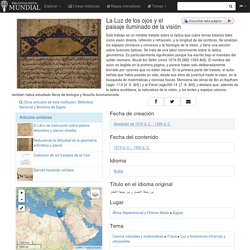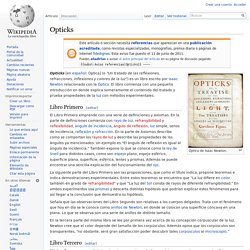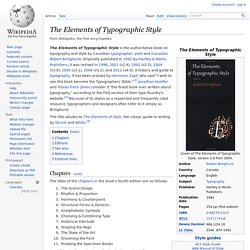

On Vision and Colors. On Vision and Colors (German: Über das Sehn und die Farben) is a treatise[1] by Arthur Schopenhauer that was published in May 1816 when the author was 28 years old.

Schopenhauer had extensively discussed with Johann Wolfgang von Goethe about the poet's Theory of Colours of 1810, in the months around the turn of the years 1813 and 1814, and basically shared Goethe's views.[2] Schopenhauer tried to physiologically demonstrate that color is "specially modified activity of the retina.[3]" The initial basis for Schopenhauer's color theory comes from Goethe's chapter on physiological colors, which discusses three principal pairs of contrasting colors: red/green, orange/blue, and yellow/violet. This is in contrast to the customary emphasis on Newton's seven colors of the Newtonian spectrum. In accordance with Aristotle, Schopenhauer considered that colors arise by the mixture of shadowy, cloudy darkness with light.
History[edit] In 1830, Schopenhauer published a revision of his color theory. Book of Optics. Cover page for Ibn al-Haytham's Book of Optics[1] The Book of Optics (Arabic: Kitāb al-Manāẓir (كتاب المناظر); Latin: De Aspectibus or Perspectiva; Italian: Deli Aspecti) is a seven-volume treatise on optics and other fields of study composed by the medieval Arab scholar Ibn al-Haytham, known in the West as Alhazen (965– c. 1040 AD).

Vision theory[edit] Light and color theory[edit] In his Book of Optics, al-Haytham claims that there are two types of light, primary light and secondary light with primary light being the stronger or more intense of the two. He says that the essential form of light comes from self-luminous bodies and accidental light comes from objects that obtain and emit light from those self-luminous bodies. Anatomy of the eye and visual process[edit] Because objects radiate light in rectilinear motion in all directions, the eye must also be hit with this light at all points.
El Libro de instrucción sobre planos desviados y planos simples. La Luz de los ojos y el paisaje iluminado de la visión. Este trabajo es un notable tratado sobre la óptica que cubre temas básicos tales como visión directa, reflexión y refracción, y la longitud de las sombras.

Se analizan los espejos cóncavos y convexos y la fisiología de la visión, y tiene una sección sobre ilusiones ópticas. Se trata de una labor convincente sobre la óptica geométrica. Es particularmente significativo porque fue escrito bajo el mandato del sultán otomano, Murāt ibn Selīm (reinó 1574-95 [982-1003 AH]). El nombre del autor es ilegible en la primera página, y parece haber sido deliberadamente borrado por razones que no están claras. Opticks. Opticks [en español: Óptica] (o “Un tratado de las reflexiones, refracciones, inflexiones y colores de la luz”) es un libro escrito por Isaac Newton relacionado con la Óptica.

El libro comienza con una pequeña introducción en donde explica someramente el contenido del tratado y prueba propiedades de la luz con métodos experimentales. Libro Primero[editar] Señala que las observaciones del Libro Segundo son relativas a los cuerpos delgados. Trata con el fenómeno que hoy en día se le conoce como anillos de Newton, en donde se colocan una superficie cóncava en una plana. Isaac Newton. Isaac Newton (Woolsthorpe, Lincolnshire; 25 de diciembre de 1642jul./ 4 de enero de 1643greg.

-Kensington, Londres; 20 de marzojul./ 31 de marzo de 1727greg.) fue un físico, filósofo, teólogo, inventor, alquimista y matemático inglés. Es autor de los Philosophiæ naturalis principia mathematica, más conocidos como los Principia, donde describe la ley de la gravitación universal y estableció las bases de la mecánica clásica mediante las leyes que llevan su nombre. Entre sus otros descubrimientos científicos destacan los trabajos sobre la naturaleza de la luz y la óptica (que se presentan principalmente en su obra Opticks) y el desarrollo del cálculo matemático. The Elements of Typographic Style Applied to the Web – a practical guide to web typography. The Elements of Typographic Style. The Elements of Typographic Style is the authoritative book on typography and style by Canadian typographer, poet and translator Robert Bringhurst.

Originally published in 1992 by Hartley & Marks Publishers, it was revised in 1996, 2001 (v2.4), 2002 (v2.5), 2004 (v3.0), 2005 (v3.1), 2008 (v3.2), and 2012 (v4.0). A history and guide to typography, it has been praised by Hermann Zapf, who said “I wish to see this book become the Typographers’ Bible.”[1] Jonathan Hoefler and Tobias Frere-Jones consider it "the finest book ever written about typography," according to the FAQ section of their type foundry's website.[2] Because of its status as a respected and frequently cited resource, typographers and designers often refer to it simply as Bringhurst.
The title alludes to The Elements of Style, the classic guide to writing by Strunk and White.[3] Chapters[edit] In addition to these chapters, the book also contains five appendices, a historical synopsis, a foreword, and an afterword.